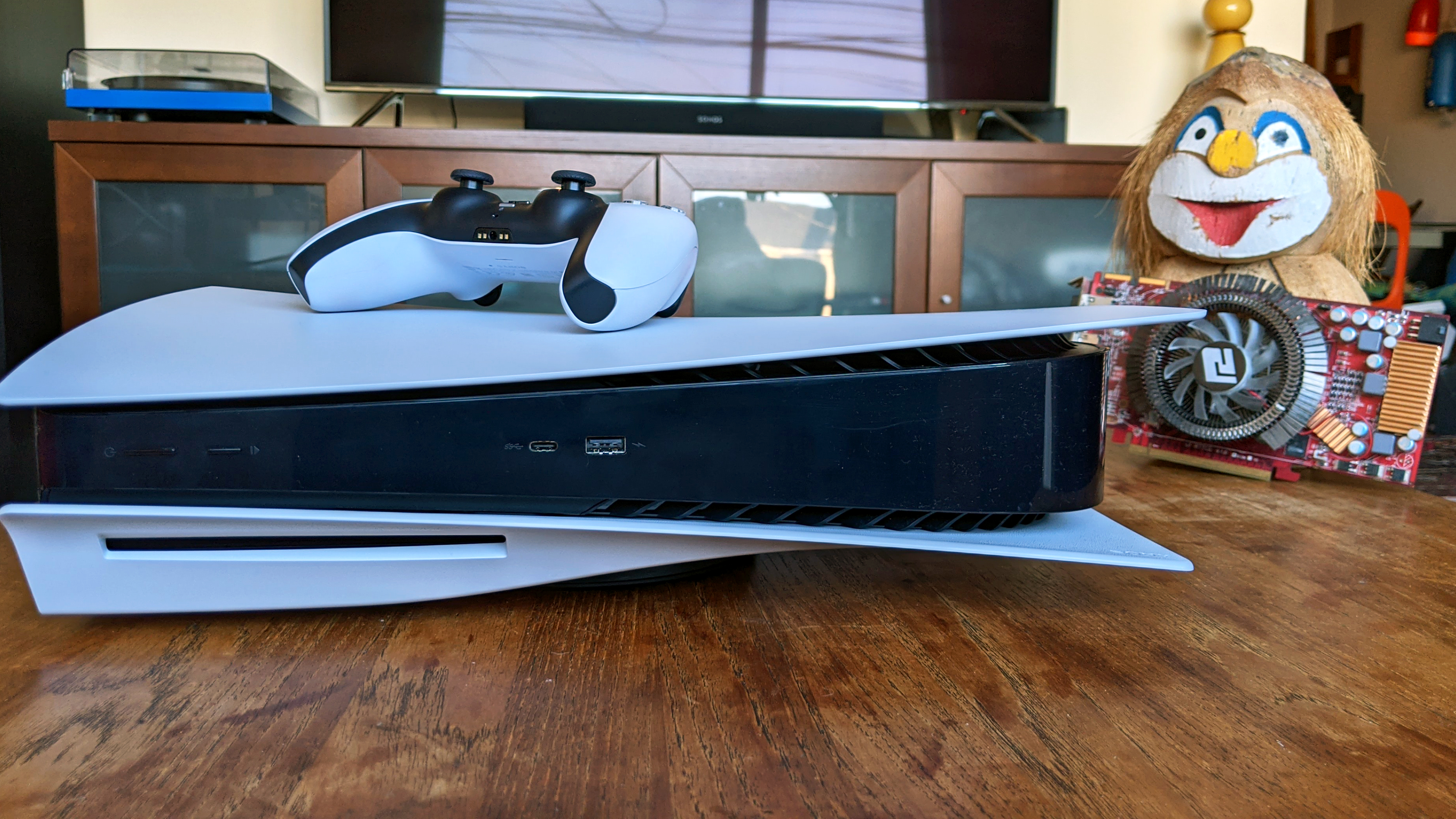PS5 Pro leak allegedly reveals 'PlayStation Spectral Super Resolution' and up to four times the ray tracing performance of the regular ol' PS5
If this new leak is anything to go by, the PlayStation 5 Pro might have some new upscaling tricks up its sleeve.

The original PlayStation 5 is getting on a bit these days. First launched back in November 2020, the console set tongues a-wagging with its reasonably impressive spec sheet, including a fast SSD, a custom eight-core AMD Zen 2 CPU, and an RDNA 2 GPU that brought it up to greater performance parity with gaming PCs of the time.
While this latest leak for the upcoming PS5 Pro doesn't go into those sort of hardware specifics—although we have summarised rumoured hardware specifications previously—it does reveal some potential performance numbers and upscaling features that might give us more of a clue as to what Sony has been cooking up behind the scenes for the new model.
This latest information comes from YouTube channel Moore's Law is Dead, which has traditionally been a bit hit-and-miss when it comes to the accuracy of leaked information. Still, in a recent video the channel reveals "leaked documentation from within Sony" that supposedly reveals the existence of PlayStation Spectral Super Resolution (PSSR), Sony's own in-house upscaling solution for the PS5 Pro.
The upscaler is described as a machine learning-enhanced version of a Temporal Anti Aliasing Upscaler (TAAU) to replace a game's existing temporal anti-aliasing or upsampling, with similar inputs to DLSS or FSR. No per-gaming training is said to be required, with a further document showing a side-by-side comparison of PSSR, TAAU and FSR2, with PSSR said to look better than AMD's own upscaling solution.
The documentation also gives some expected comparative performance figures to the regular PS5, including the assertion that "rendering is about 45% faster" and that ray tracing speed is two to three times faster than the older model, with up to a four times improvement in some cases. Allegedly the PS5 Pro's GPU has a 16 bit floating point calculation figure of 67 TFLOPs, which equates to an estimated 33.5 TFLOPs of FP32 compute performance.
Given that other leaks have suggested that the PS5 Pro may feature some elements of RDNA 4 in its GPU, that would be quite the ray tracing performance increase as RDNA 3 only marginally improved ray tracing figures over the previous generation. If these leaked performance figures are correct, that suggests a potentially substantial step up in ray tracing capability from RDNA 4 GPUs in general, although only time will tell.

Best CPU for gaming: The top chips from Intel and AMD.
Best gaming motherboard: The right boards.
Best graphics card: Your perfect pixel-pusher awaits.
Best SSD for gaming: Get into the game ahead of the rest.
That would be quite the increase over the regular model, which manages a mere 10.29 TFLOPs of peak FP32 compute, or the Xbox Series X's peak figure of 12.15 TFLOPs.
Keep up to date with the most important stories and the best deals, as picked by the PC Gamer team.
That's a lot of flops. Anyway, while leaks of this type should be taken with the appropriate pinch of salt, given that we're getting closer to the expected launch window for the PS5 Pro it wouldn't be a surprise if leaks become more frequent as more publishers, developers and others are briefed on the exact specs and capabilities of the new machine.
As things stand the PS5 Pro is expected to be launched in the second half of this year, with some sources claiming a potential September 2024 launch, so we may have to wait to confirm or deny which of the leaks turned out to hold some credence. Until then, I fancy a bit of God of War. PC version of course, although I hear the PS5 take was very good...

Andy built his first gaming PC at the tender age of 12, when IDE cables were a thing and high resolution wasn't—and he hasn't stopped since. Now working as a hardware writer for PC Gamer, Andy's been jumping around the world attending product launches and trade shows, all the while reviewing every bit of PC hardware he can get his hands on. You name it, if it's interesting hardware he'll write words about it, with opinions and everything.

